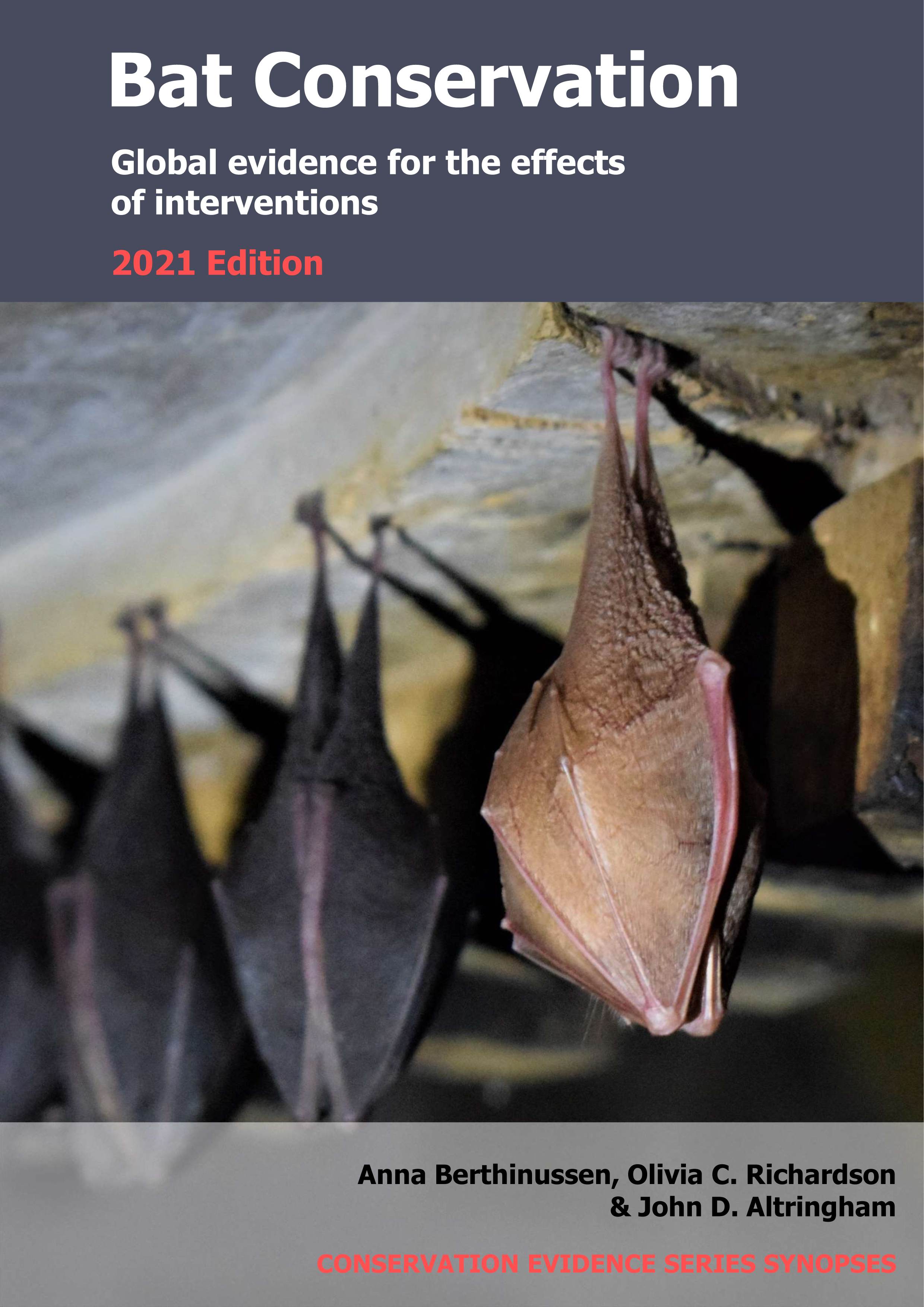Change effluent treatments of domestic and urban waste water
-
Overall effectiveness category Unknown effectiveness (limited evidence)
-
Number of studies: 1
View assessment score
Hide assessment score
How is the evidence assessed?
-
Effectiveness
25% -
Certainty
20% -
Harms
0%
Study locations
Supporting evidence from individual studies
A replicated, site comparison study in 2003 at 30 sewage treatment works and in central and southern Scotland, UK (Park & Cristinacce 2006) found that percolating filter beds had higher activity of Pipistrellus spp. over them than activated sludge systems, and activity over filter beds was similar to that along nearby river banks. The number of Pipistrellus spp. bat passes recorded over percolating filter beds (54) was higher than over activated sludge systems (9). Activity of Pipistrellus spp. over filter beds (average 15 bat passes/site) was also similar to that along nearby river banks (23 bat passes/site), whereas activity over activated sludge sites (3 bat passes/site) was lower than along nearby river banks (18 bat passes/site). At filter beds, waste water is sprayed over inert filter material creating a microbial film which supports high insect numbers. In activated sludge systems, sewage and bacterial sludge are mixed creating an unfavourable habitat for insects. At each of 30 sites (18 filter bed, 12 activated sludge), bat activity was recorded with bat detectors at three points/site for 15 minutes each after dusk in June–August 2003. At each of 23 sites (15 filter bed, 8 activated sludge), recordings were also made at two points on the river bank 50 and 75 m upstream from the sewage treatment works.
Study and other actions tested
Where has this evidence come from?
List of journals searched by synopsis
All the journals searched for all synopses
This Action forms part of the Action Synopsis:
Bat Conservation
Bat Conservation - Published 2021
Update 2020





)_2023.JPG)














